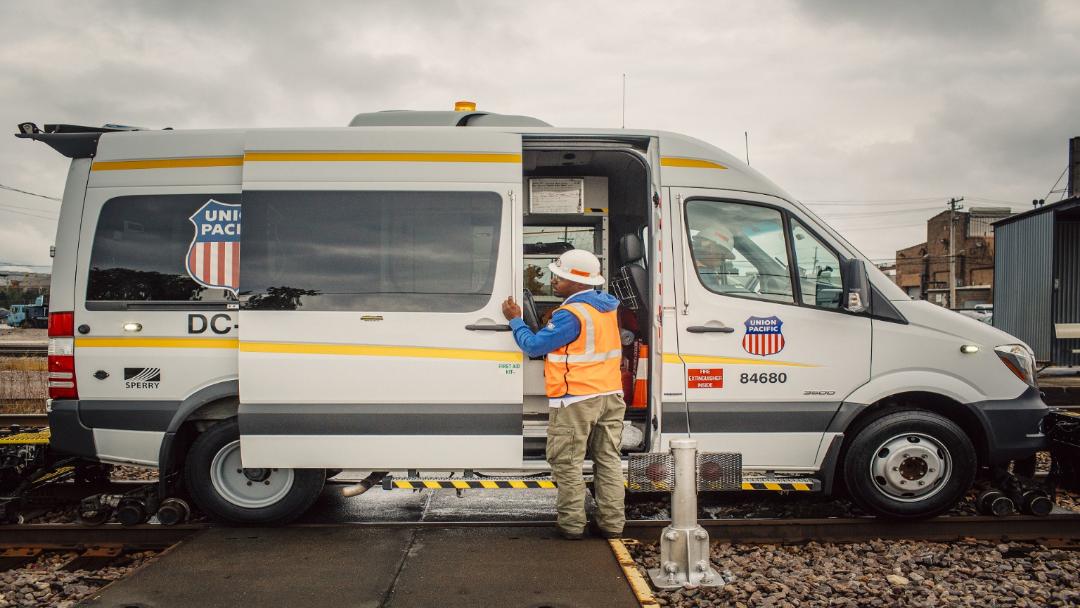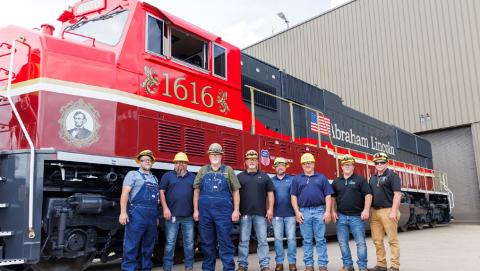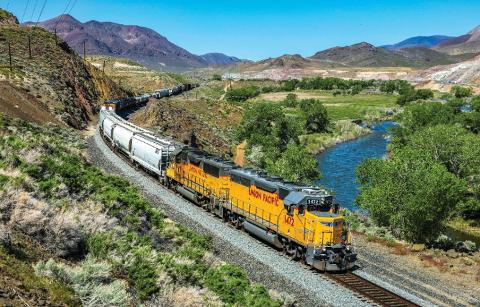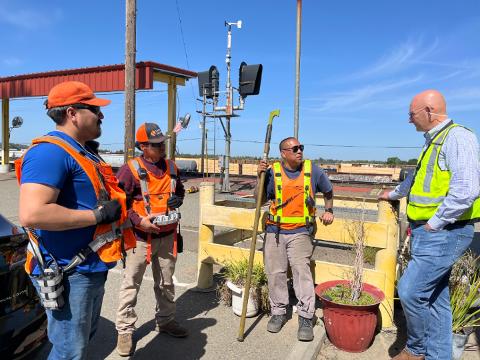Derailment prevention initiatives are fundamental to safe train operations at Union Pacific. There are several approaches to accomplishing this work. Union Pacific utilizes technology, optimal response and maintenance methodologies, and an aggressive capital renewal strategy to help keep trains on the tracks. And it’s working. Comparing last year to 2019, total derailments on Union Pacific have declined by 21%.
Enhanced Defect Detection Leverages Technology
Union Pacific’s robust network of more than 7,000 wayside detection devices monitor the condition of freight cars and locomotives in real time. These wayside detectors are electronic sensors installed along the tracks used to measure strain, temperature, acoustic signature and dimensions of various components such as bearings, wheels, trucks and braking systems.
These alerts are used to drive UP responses to determine safe handling and repair of rolling stock. Robust use of wayside detectors vastly improves proactive risk identification and enhances repair capabilities.
Among types of wayside detectors:
- Hot Box Detectors measure bearing temperatures on trains passing over the detectors. HBDs have local “talker” capabilities where the detector directly notifies the passing train crew of hot bearings on the train.
- Wheel Temperature Detectors measure the temperature of the wheel plate. Wheel temperature data is used to identify braking issues such as sticking brakes, handbrakes left on or ineffective brakes.
- Acoustic Bearing Detectors consist of microphones that record sound signatures of bearings on a passing train. The acoustic signatures identify internal bearing defects and provide proactive capabilities to identify and remove potential hot bearings.
- Wheel Impact Detectors are a collection of strain gages welded to the rail that measure strain when wheels pass over the strain gage cribs. These detectors measure force exerted by an out-of-round wheel or wheels that might be progressing toward breakage failure.
- Wheel Profile Detectors use lasers to measure wheel shapes. Normal interaction of wheels with rails causes the wheels to wear, and these detectors determine the amount of wear and provide the ability to address it in a timely manner.
- Machine Vision Systems capture images of rolling stock. These images are processed and analyzed using machine learning and artificial intelligence to identify abnormal or defective component conditions.
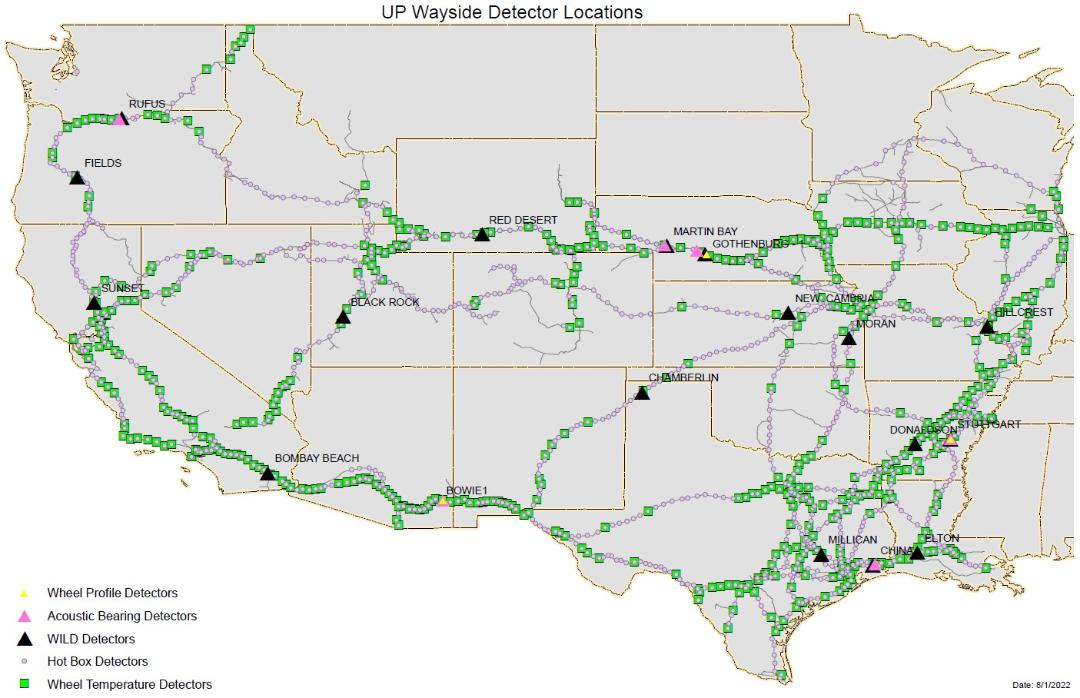
Comprehensive Data Identifies Risk and Response
The wayside detectors described above generate more than 16 million data points every day on Union Pacific. This comprehensive information – temperature, vibration, stress/strain, acoustics, vision and shape -- provides a holistic evaluation of equipment condition and sets the stage for required action. The conditions are sent as “Alerts” belonging to specific cars. Based on the severity of the alert, the appropriate risk-based response is taken:
- Stop train immediately
- Repair at next location
- Repair at planned maintenance event
- Monitor and track for trending
Timely and optimal response to identified equipment conditions helps address risk with minimal interruption to customer shipments and keeps trains on track to their destination. Additionally, we share alerts and health summaries with other railroads, railcar owners, and the Association of American Railroads (AAR).
Track-Related Derailment Prevention Is Continuous Process
Subscribe to Inside Track
Track-related derailment prevention is the forefront of what Union Pacific’s engineering department does every day, and in the last 10 years Union Pacific’s track-caused derailments have seen a 55% reduction. While that is an accomplishment to be proud of, it has not stopped us from continuing to use training and technology to drive that number to zero. Derailment prevention occurs many ways, but when it comes to track, it boils down to inspection, assessment, and capital renewal.
Inspection
Inspection is the process of finding non-compliant conditions and applying the 3 Rs: Repair, Restrict and Remove. Every year the engineering team is visually inspecting 4.5 million miles with our track inspection team, and over 430,000 miles with our geometry inspection fleet consisting of locomotives, boxcars and operated vehicles. We will also test over 60,000 miles of rail flaw inspection with our Detector Car fleet. The urgent items are relayed to our field teams for repairs, the rest of the data is used to drive our longer team maintenance planning.
Assessment
Assessments are a maintenance planning tool. There is an immense amount of data coming from our geometry fleet, most of which allows for proper surfacing plans to be executed to repair conditions before they become defects. Another example of assessment is our tie assessment team, and in 2023, this team will assess 6,000 miles of ties. The same type of analysis goes into our rail planning. The data collected from the rail flaw inspection determines optimal locations for rail replacement.
Capital Renewal
The engineering department’s capital renewal program is at the heart of our long-term derailment prevention strategy. In 2023, we will spend $1.9 billion dollars for capital renewal. Unlike inspection that is focused on immediate repairs, the capital replacement strategy is fed by our assessment program to target renewals at the right place, at the right time.
Safety Is Always at the Forefront
These are a few examples of the multiple safeguards supporting Union Pacific’s derailment prevention efforts. Our teams are constantly evaluating new technologies, materials that provide improved performance, and equipment and procedures that will improve repairs. We are deeply committed to continuously improving our approach to derailment prevention; its success is the foundation of safety in everything we do.
This is part two of a series of Insights essays focused on rail transportation safety at Union Pacific. Read the first essay, published Feb. 20, 2023.
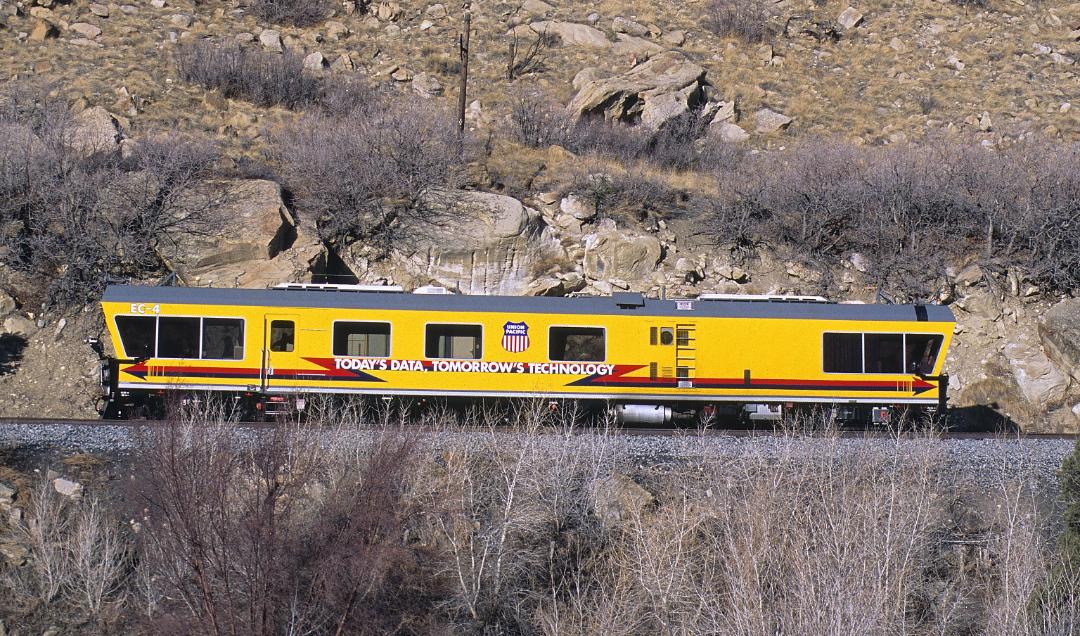
The EC-4 Geometry Car's optical gauge measuring system, consisting of lasers and cameras under the rail car, produces real-time track geometry images. The system evaluates track structure wear and tests for defects to help prevent derailments, maintain track health and increase track longevity.

